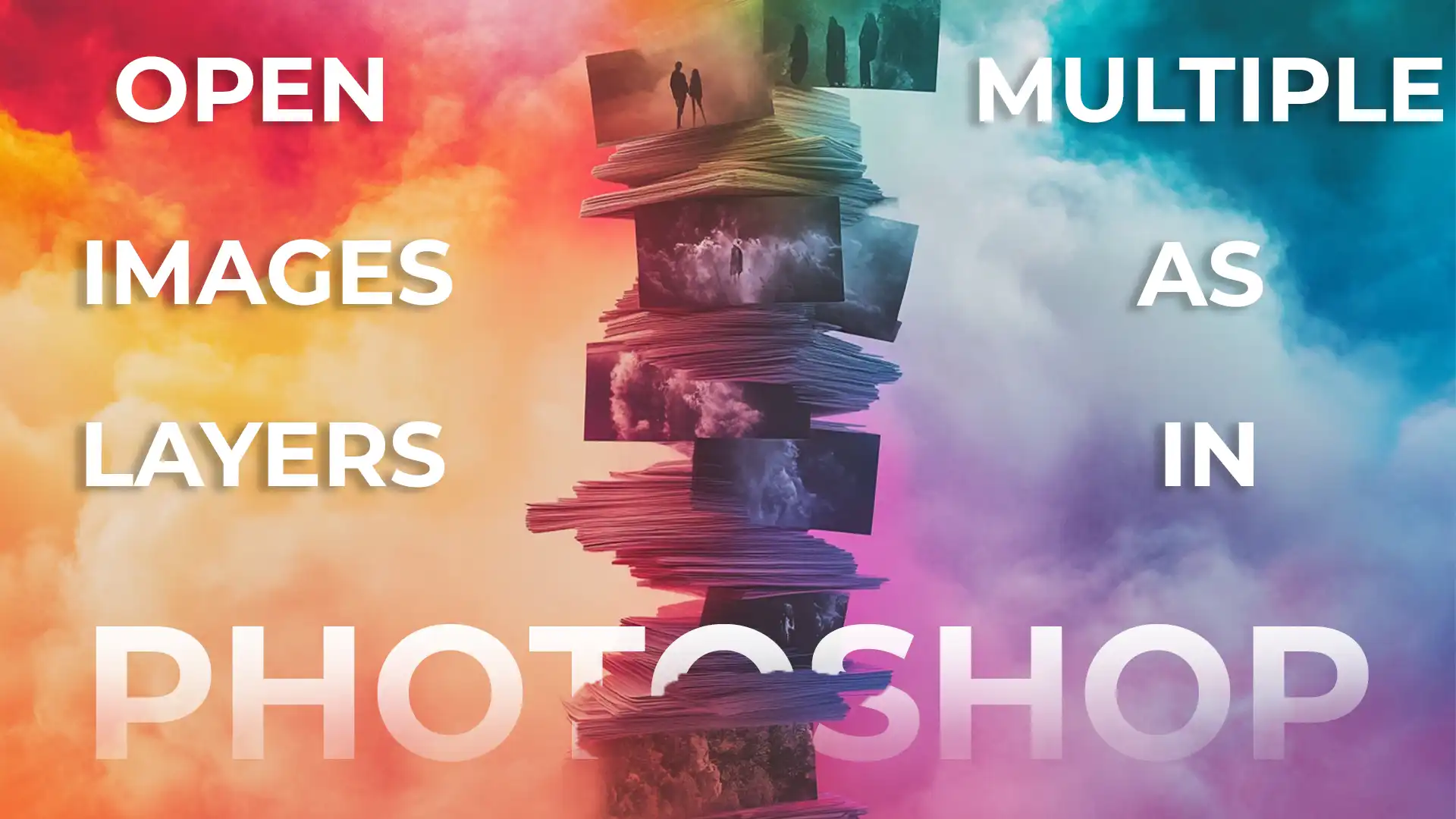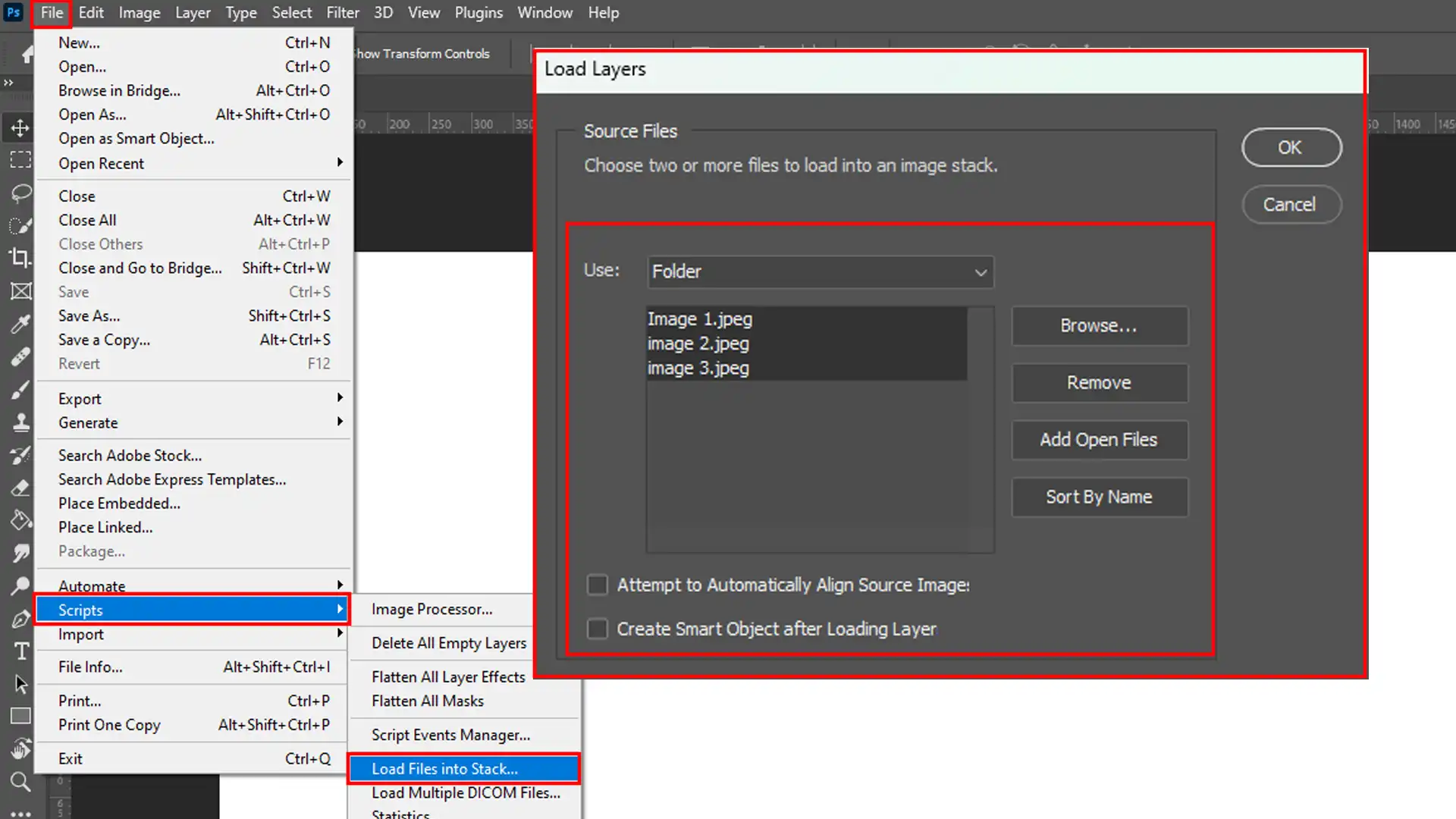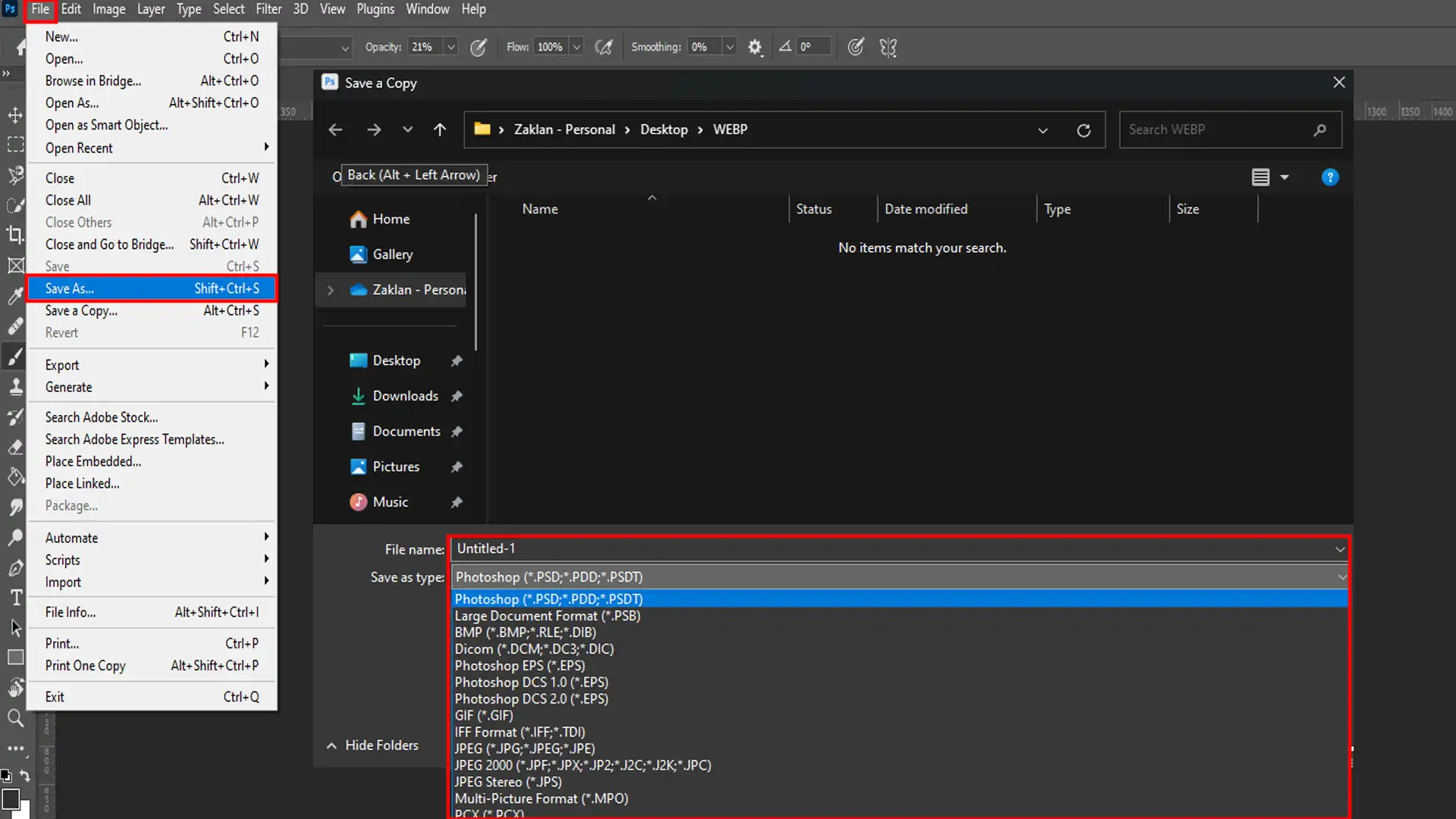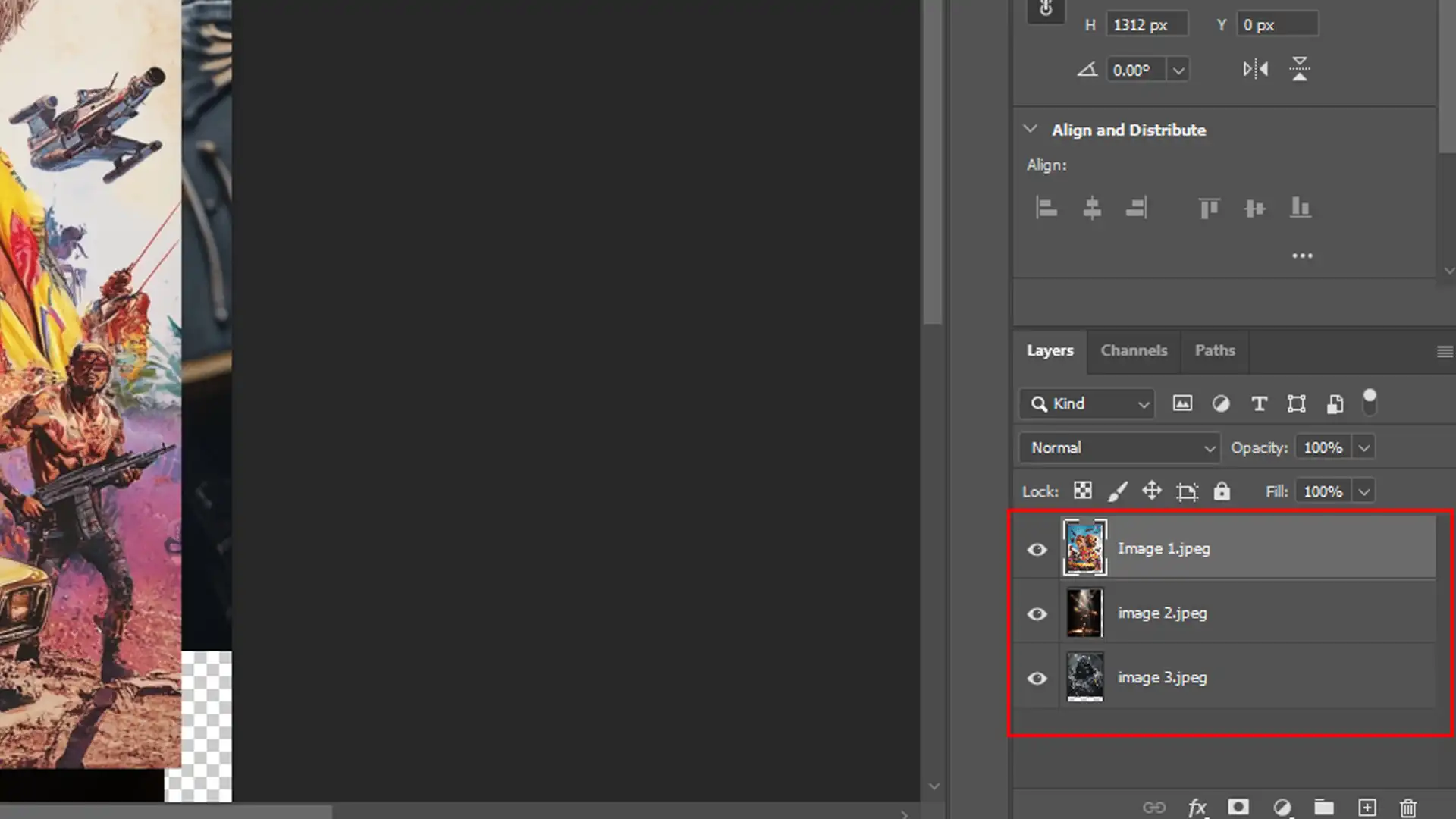
Wondering how to open multiple images as layers in Photoshop? You’ve come to the right place. If you’re like me, juggling multiple images for a Photoshop project, you know how time-consuming it can be to open each one individually.
But what if I told you there’s a faster way to do it?
Imagine effortlessly stacking images, creating stunning composites, and boosting your productivity all at once. Intrigued?
Keep reading to discover a step-by-step guide that will transform how you work with images in Photoshop forever.
With these Photoshop tutorials, you’ll learn techniques that will make editing easier and more efficient.
Let’s get started!
Table of Contents
Step-by-Step Guide: How to Open Multiple Images as Layers in Photoshop
To easily manage multiple images as layers in Photoshop, you can use different methods.
Whether starting from the Photoshop app icon or using tools like Adobe Bridge, this guide will walk you through the steps to streamline your workflow.
Using Adobe Bridge to Load Files
This feature is a valuable tool if you need to open multiple images.
- First, launch it by clicking its icon or opening it from your applications menu.
- Navigate to the folder containing your images using the folders panel on the left.
- Select the images you want to load as layers by holding down the Ctrl (Windows) or Command (Mac) key while clicking on them.
- Once you've selected the images, go to the Tools menu at the top and choose Photoshop.
- Select "Load Files into Photoshop Layers." This action will automatically open Photoshop and load each selected image as a separate layer.
You will see the layers panel populated with your images as individual layers, ready for editing.
Import Multiple Images Directly in Photoshop

If you prefer to stay within Photoshop, here’s how you can import multiple images quickly:
- Begin by opening Photoshop.
- In the top menu, go to File, then hover over Scripts, and click on "Load Files into Stack." This option opens a new window.
- In the new window, click browse and locate your images.
- Hold down the Ctrl (Windows) or Command (Mac) key to select multiple items.
- After selecting, click OK. Your chosen images will appear in the "Load Layers" window.
- Click OK again, and Photoshop will create a new document with each image loaded as its own layer.
Alternative Methods for Loading Multiple Files
Besides using Bridge or the Load Files into Stack script, other options are worth exploring:
For instance, you can drag and drop images directly into an open Photoshop document.
Open Photoshop, create a new document or use an existing Photoshop file.
Select your files in Finder (Mac) or File Explorer (Windows), and drag them into the Photoshop window. Each added image will appear as a new layer.
Another method is to use Lightroom. Export selected images from Lightroom to Photoshop by choosing “Edit In” and selecting “Open as Layers in Photoshop.”
This action imports all selected ones as layers in a new Photoshop document.
Pro Tip: To manage layers effectively, group related layers by selecting them and pressing Ctrl+G (Windows) or Command+G (Mac).
Familiarize yourself with Photoshop shortcuts and essential tools like these to speed up your workflow and keep your layers panel organized.
Discover how Photoshop actions can streamline alternative methods for loading multiple files. By automating repetitive tasks, actions enhance efficiency and simplify batch processing.
Additionally, note how Photoshop displays layers in the Photoshop interface to understand their arrangement and manage them efficiently.
How to Open Multiple Images as Layers in Photoshop: Troubleshooting Common Issues
When working with Photoshop or any Creative Cloud program, you might encounter a few hiccups, whether you’re dealing with multiple layers or just a single image.
In this section, we’ll cover some common issues and how to fix them, starting with import errors.
Resolving Import Errors
Let’s jump right into it. Sometimes, you try to open multiple images in Photoshop, and something goes wrong. Frustrating, huh?
Well, first things first, double-check the file formats. Certain file formats like RAW or JPEG format might need a simple conversion.
If that’s not the problem, restart Photoshop. This might fix minor glitches. It’s just like rebooting your computer. Simple but effective. Still facing issues? Try decreasing the number of files you’re loading.
Too many photos displayed at once can overwhelm the app.
Lastly, if nothing works, update both Photoshop and your OS. An outdated version can cause compatibility problems. Keep your software up to date, and most bugs will stay away.
Resolving import errors for the web effectively is essential to optimizing web image quality. By troubleshooting these errors, you ensure high-quality images load correctly on your site.
Dealing with File Compatibility Problems

Compatibility issues. They happen, don’t they? If you encounter an alert saying the file can’t be opened, check if your Photoshop is updated to its latest version. Older versions may not support newer file formats.
Another trick is converting your files to a universally accepted format like JPEG. Use any free online converter to change the format quickly.
Go to File > Save As within Photoshop for conversion as well.
When you load files into stack, ensure they are not corrupted. A corrupted file shows a preview but won’t open properly.
Trust me, understanding these tips will make your photoshopping experience much smoother.
Pro Tip: To organize efficiently, group similar layers by selecting them and hitting Ctrl+G (Windows) or Command+G (Mac).
This is especially useful when working with multiple items in different formats, like NEF or JPEG format, as it keeps your layers panel tidy and easy to navigate.
Creative Uses for How to Open Multiple Image as Layers in Photoshop
Working with multiple image layers opens up a world of creative possibilities in Photoshop.
| Feature | Adobe Bridge Method | Direct Import Method |
|---|---|---|
| Ease of Use | Easy if you’re familiar with Bridge | Directly from Photoshop interface |
| Workflow Integration | Seamlessly integrates with Adobe Bridge | Immediate access within Photoshop |
| Layer Management | Automatically arranges selected images as layers | Allows manual arrangement after import |
| Selection Flexibility | Select multiple images easily | Use browsing dialog to select images |
| Processing Speed | Fast and efficient for large batches | Quick for immediate import and editing |
By adding a new layer or using options like click Load Files into the stack, you can blend images seamlessly, enhance depth, and create dynamic compositions.
Enhancing Image Depth

Let’s dive into how to enhance image depth using multiple images as layers. When you have multiple images as layers, you essentially stack them one on top of the other.
This layering adds depth and complexity to your Photoshop project.
To start, open multiple items in Photoshop. You can either drag and drop them into the workspace or use File > Scripts > Load Files into Stack.
Once loaded, arrange your layers in the layers panel. Experiment with different layer orders to find the most appealing arrangement. Remember, the layers panel is your best friend here.
Next, use the transparency feature. Select a layer and adjust its opacity in the upper right corner of the layers panel.
Lowering opacity makes the layer semi-transparent, blending it with the layers beneath it. This blending effect adds a sense of depth.
Don’t forget to hide layers that aren’t adding value by clicking the eye icon next to the layer. It’s important to keep your workspace clean. You won’t believe how much easier it gets once unnecessary layers are hidden.
To enhance image depth, it’s crucial to understand master image quality. By fine-tuning depth and detail, you can transform your visuals into high-resolution masterpieces.
Creating Composite Images
Creating composite images involves combining multiple images as layers into a single image. This technique is perfect for creating surreal or fantasy scenes where multiple unrelated elements come together.
Start by loading your Photoshop document with all your individual images. Use File > Scripts > Load Files into Stack to bring in the entire folder’s photo contents if needed. Each image will have its own layer in the Photoshop document.
Choose one single image as your background. Then position your other images on separate layers. Use the Move tool to place each element precisely where you want it. Transform these layers (Ctrl + T / Command + T) to fit them perfectly into your composition.
Blending modes create magic here. Experiment with different blend modes in the layers panel to see how each one affects your composite image.
Modes like Multiply, Screen, and Overlay can significantly alter how layers interact.
Masks are another significant tool. Add a mask to any layer by clicking the mask icon at the bottom of the layers panel. Use a black brush to hide parts of the layer or a white brush to reveal them.
This technique helps integrate various elements seamlessly.
Finally, adjustments layers fine-tune the overall look. Add a new adjustment layer (like Curves or Hue/Saturation) to tweak colors and contrast without affecting the original layers.
Adjustment layers for Multiple Images
Adjustment layers sit above the other images in the Photoshop document, and you can go back and modify them anytime.
Pro Tip: Always save your project often, especially when you’re making intricate changes like using masks to blend layers or to remove an object seamlessly!
A sudden crash can mean losing hours of work. Saving frequently ensures you’re protected against any unexpected issues.
Explore Photoshop layering tutorials to master creating composite images. These tutorials guide you through layering techniques that enhance your ability to blend and combine visuals seamlessly.
Frequently Asked Questions (FAQs)

Can you open multiple files as layers in Photoshop?
- Yes, you can open multiple items as layers in Photoshop. This method allows you to combine different images into a single Photoshop document, each as its own layer.
How to open multiple images as layers in Photoshop from Bridge?
- Open Bridge and navigate to the folder containing your images.
- Select the images you want to use. You can click on the first image, hold down the Shift key, and click on the last image to select a range.
- Right-click on one of the selected images and choose “Open In Camera Raw.”
- In Camera Raw, click on the small menu icon in the upper-right corner and select “Open objects as Photoshop layers.” This action will open all selected images as layers in a single Photoshop file.
What are the steps to apply a layer to multiple open images in Photoshop?
- To apply a layer effect to multiple images, each image must be opened in Photoshop in its own window.
- Create or adjust the layer you want to duplicate across other open documents.
- Right-click on the layer in the Layers panel and select “Duplicate Layer.”
- In the Duplicate Layer dialog, under “Destination,” choose the document to which you want to apply the layer and click OK.
- Repeat for each image document as needed.
How do you open another image as a layer in Photoshop?
- Open the first image in Photoshop, which will serve as your base layer.
- To add another image, go to “File” then select “Place Embedded” or “Place Linked.”
- Navigate to the image file you wish to add as a layer and click “Place.” This image will be added as a new layer to your existing file.
- Adjust the size and position as necessary, then press Enter to place it.
Conclusion
Opening multiple images as layers in Photoshop is a game-changer for anyone working with complex projects.
By using Adobe Bridge or directly importing through Photoshop, you can save time and keep your workflow smooth. Personally, I’ve found these methods incredibly helpful for managing large numbers of images quickly and efficiently.
If you’re looking to dive deeper into Photoshop and Lightroom, check out my Photoshop Course and Lightroom Course.
They offer more tips and tricks to help you get the most out of your editing software.
And if you need to get started with Adobe’s tools, visit Adobe Photoshop and Adobe Lightroom for all the latest features and updates.
Happy editing!
Read more about Photoshop:














